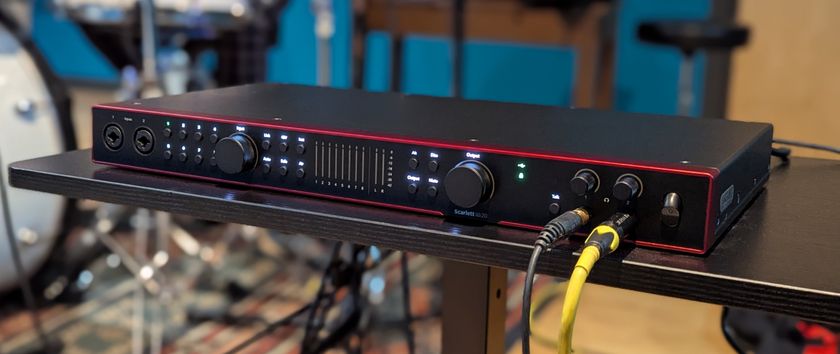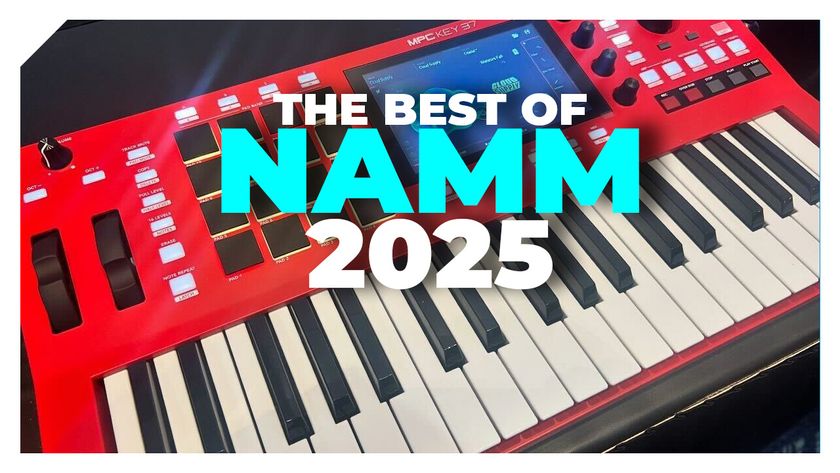Focusrite unveils Scarlett 2i2 audio interface

Focusrite Scarlett 2i2

Focusrite Scarlett 2i2 front

Focusrite Scarlett 2i2 rear
Unless you record a lot of real instruments simultaneously, a 2-in/2-out audio interface is all you really need these days, but Focusrite will tell you that not all such devices are born equal. In fact, the company reckons that its new Scarlett 2i2 offers "the highest specifications in its class".
The aim here is to provide a simple, high quality interface that looks and feels good. So, the Scarlett 2i2 features two Focusrite mic preamps, an anodised aluminium unibody chassis, and a direct monitor function for zero-latency tracking.
Obviously, we can't vouch for the sound quality just yet, but Focusrite has a pretty strong track record in this area. Read on for the official press release and check out the promo video above. Expect to see the Scarlett 2i2 in stores in October priced at £120.
Focusrite Scarlett 2i2 audio interface press release
Focusrite proudly introduce the Scarlett 2i2 audio interface, featuring exceptional audio quality, ultimate simplicity and stunning design. The Focusrite Scarlett 2i2 is a 2-in/2-out USB 2.0 audio interface with the highest specifications in its class. Alongside award-winning Focusrite mic/instrument preamps, high-quality 24-bit/96kHz digital conversion and flexible monitor control, it features a new unibody industrial design, which is visually striking, functional and robust.
Key Features
- High-quality, award-winning Focusrite mic preamps
- Anodised aluminium unibody chassis
- Unique LED-halo signal indicators
- Professional-standard 24-bit/96kHz digital conversion
- Direct Monitor function for zero-latency tracking
- Powered by USB connection
- Comes with Focusrite Scarlett plug-in suite & Ableton Live Lite
At the heart of the Scarlett 2i2, two Focusrite microphone preamplifiers provide an exceptionally clean signal path for mic-, instrument- or line-level sources, and supply phantom power to condenser mics. Best-in-class digital converters capture pristine-quality audio for professional-sounding results, and a new unibody chassis — a single piece of red anodised aluminium — surrounds the 2i2's internal circuitry and controls. Not only does it sound and look fantastic, the Scarlett 2i2 is also rugged enough to take knocks on stage and throw into a laptop bag to make high-quality recordings anywhere.
Other innovations on the Scarlett 2i2 include unique LED-halo signal indicators, which encircle each of the gain controls. These glow green when an input signal is detected and turn red if clipping occurs, to provide a quick and easy way of ensuring that an appropriate signal level is achieved.
The Scarlett 2i2 has a pair of quarter-inch TRS jack outputs for feeding powered studio monitors or an external audio device, such as a mixer. A large knob provides accurate control of the output level, and direct monitoring allows for zero-latency tracking. There's also a quarter-inch headphones output with dedicated level control. Since the interface is bus powered, an additional power supply is not needed, meaning the interface is truly portable. What's more, it's bundled with the Focusrite Scarlett Plug-in Suite as well as Ableton Live Lite: all that's needed to get recording right away.
Get the MusicRadar Newsletter
Want all the hottest music and gear news, reviews, deals, features and more, direct to your inbox? Sign up here.
Combining professional-sounding mic preamps with the very best in USB 2.0 interfacing technology, the Scarlett 2i2 is perfect for those new to recording, and for the professional who wants the Focusrite quality in a compact, mobile and robust package.
The Focusrite Scarlett 2i2 joins the existing line of Focusrite USB and Firewire interfaces, and will not supersede any current Focusrite products. It will be shipping worldwide in October 2011, priced:
USA: $199.99 MSRP / $149.99 at dealers
UK: £119.99 inc. VAT typical street price
DE: €159 inc. Tax UVP (MSRP)

I’m the Deputy Editor of MusicRadar, having worked on the site since its launch in 2007. I previously spent eight years working on our sister magazine, Computer Music. I’ve been playing the piano, gigging in bands and failing to finish tracks at home for more than 30 years, 24 of which I’ve also spent writing about music and the ever-changing technology used to make it.











